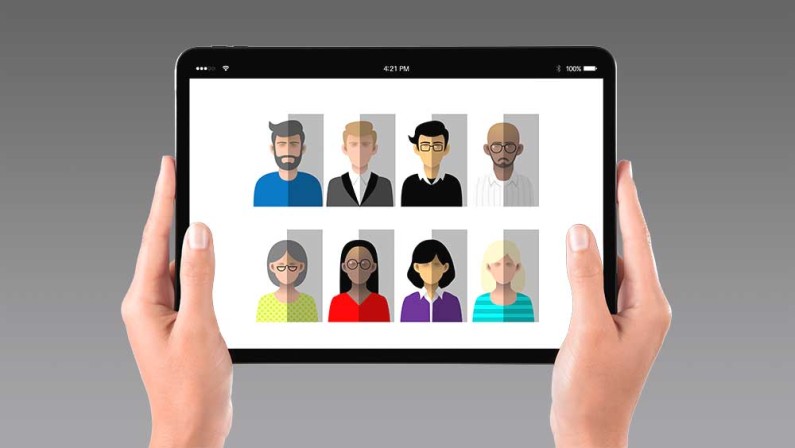Are ‘Buyer Personas’ Just Marketing Bullsh*t?

Let’s be real – the term ‘buyer personas’ sounds like marketing jargon, doesn’t it? It can come across as one of those buzzwords thrown around in marketing strategy meetings or business training courses, but it might feel a bit pointless in practice. Some might even call it marketing bullsh*t. But is it really? Or is there more to this concept?
Before we toss out buyer personas as just another piece of marketing jargon, let’s break it down. A buyer persona is essentially a semi-fictional character representing your ideal customer. It’s created based on customer data, research, and sometimes a dash of creativity. The goal is to get businesses to stop thinking of customers as faceless statistics and start seeing them as real people. But do we truly need them? And why is it important for businesses to understand their target audience? Let’s dive into it.
Why Do Buyer Personas Get a Bad Rap?
Buyer personas often receive criticism for being too simplistic or overly generalised. If you've ever seen a persona profile that says, ‘Meet Emma, a 35-year-old working mother of two who likes coffee and yoga’, you’ve probably rolled your eyes. Can an entire segment of your audience be summed up in a few lines? Not really. And if that’s all your buyer persona consists of, you’re not gaining any real customer insights at all.
However, when done correctly, buyer personas shouldn’t be shallow or one-dimensional. They should dig deeper into customer motivations, pain points, and behaviour. They should offer insight into the ‘why’ behind a customer’s purchasing decisions. So while the idea of buyer personas is valid, it’s the actual execution that often misses the mark.
The Importance of Knowing Your Target Audience
Alright, so buyer personas aren’t inherently marketing bullsh*t, but why is it important for businesses to know their customers?
1. Better Marketing Strategies
This is key. Marketing without understanding your target audience is like throwing spaghetti at the wall and hoping it sticks. Knowing your customer helps you create content and messaging that resonates. You’re not just shouting into the void; you’re speaking directly to people who care about your product or service.
When you understand your customers’ needs, you can tailor your marketing strategy to solve their specific problems. If you’re targeting millennials with tech gadgets, you’ll need a different approach than if you were selling to Baby Boomers. This is where customer insights, gathered through buyer personas, help shape your strategy.
2. Improved Customer Experience
Here’s a fun fact: people don’t like feeling like they’re just another customer to be sold to. They want to feel understood. When businesses take the time to understand their customers’ frustrations and desires, they can offer a more personalised customer experience.
Knowing your customers helps you anticipate their needs and provide relevant solutions. This improves customer satisfaction, builds loyalty, and boosts word-of-mouth marketing – all key aspects of a successful business.
3. More Targeted Product Development
If you understand your customers, you’ll have a clearer idea of what they want in a product or service. You can use customer data to refine your offerings and focus on solving real problems that your audience faces. Instead of guessing what your market might like, you can use customer insights to inform your product development strategy.
Think about companies like Apple. They’ve built an empire by deeply understanding their customers and, famously, giving them what they want before they even knew they wanted it. That kind of customer insight is gold and comes from real, actionable data – not guesswork.
4. Stronger Brand Loyalty
Knowing your customers helps you build lasting relationships. When customers feel like a brand truly understands them, they’re more likely to remain loyal. People are emotional creatures, and when you connect with your audience on an emotional level, they’re more likely to become long-term customers.
Take brands like Nike or Coca-Cola, for instance. They don’t just sell products; they sell lifestyles, values, and emotions. That’s brand loyalty, and it’s built on a deep understanding of the customer.
Where Can You Find Reliable Customer Data?
Creating buyer personas isn’t about guessing; it’s about gathering real customer insights. Here are a few places where you can pull valuable data for your persona profiles:
-
Customer Interviews – Speaking directly with customers gives you insights into their motivations and pain points. Conduct in-depth interviews to understand why they buy from you.
-
Surveys – Tools like SurveyMonkey or Google Forms allow you to gather data from a larger audience. Use surveys to ask relevant questions about their needs, frustrations, and preferences.
-
Website Analytics – Tools like Google Analytics offer valuable data on how customers behave on your site. This can help identify trends and behaviours that shape your personas.
-
CRM Data – CRM platforms like Salesforce contain historical customer data that can reveal behavioural patterns, making your personas more accurate.
-
Social Media Listening – Tools like Hootsuite allow you to monitor customer conversations and sentiment on social media. Social media listening is essential for staying current on what your audience cares about.
-
Sales Team Feedback – Your sales team is constantly interacting with potential customers, giving them first-hand knowledge of common customer objections and preferences. Their input can be valuable for building accurate personas.
-
Industry Reports – Market research from sources like Nielsen or Statista helps you understand broader trends within your industry. Use these insights to complement your buyer personas with a wider understanding of market demographics.
So, What’s the Verdict?
Are buyer personas just marketing bullsh*t? Not entirely. When done poorly, they can feel like a waste of time. But when built on solid customer data and real insights, they are a powerful tool for understanding your target audience. Buyer personas help you craft better marketing strategies, improve customer experiences, and even develop stronger products.
But buyer personas aren’t enough on their own. They need to be continuously updated and used alongside real-time customer insights, such as feedback and behavioural data. A flexible, data-driven approach ensures your personas reflect your customers, not just a stereotype like ‘Emma, the coffee-loving yoga mum with two kids’.
Continuous Customer Insight is Key
Customer understanding isn’t static. People change, markets evolve, and trends shift. That’s why businesses need to update their customer insights regularly. Instead of relying on outdated buyer personas, use ongoing data from surveys, social media, and customer feedback to keep refining your marketing strategy.
In the end, buyer personas aren’t just marketing jargon – they can be a crucial part of your business’s success. When they’re backed by data and constantly evolving, they help you stay connected to your audience and serve them better.
Wrapping It Up
At the end of the day, while buyer personas aren’t marketing bullsh*t, they can be if you don’t do them right. The key is knowing your target audience deeply, using customer data and insights from reliable sources. The more you know your customer, the better you’ll be at serving them. Which, at the end of the day, is why you’re in business.
And that’s not just marketing bullsh*t – that’s smart business.
Sources:
-
Google Analytics: analytics.google.com/
-
HubSpot on Buyer Personas: blog.hubspot.com/marketing/buyer-persona-research
-
Salesforce CRM: www.salesforce.com/
-
Statista Industry Reports: www.statista.com/
-
Hootsuite Social Media Listening: https://hootsuite.com/
